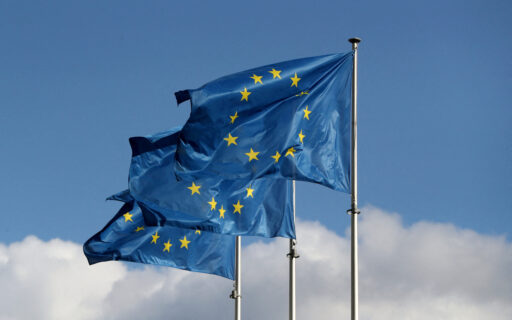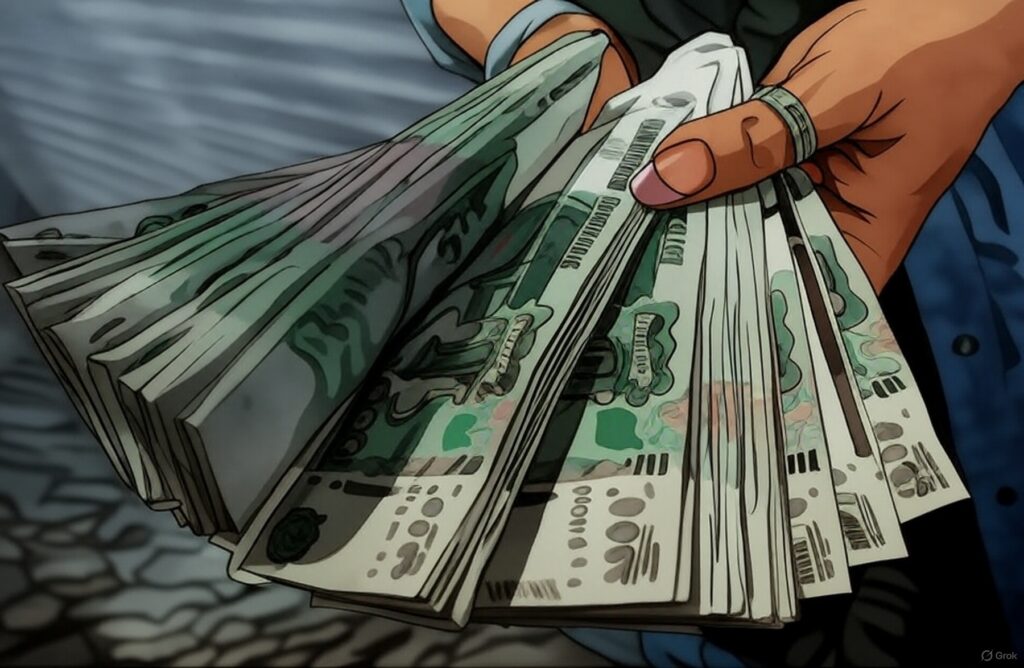It seems impossible to keep up with the pace of events unfolding since President Trump announced «Liberation Day» on April 2. The sheer incompetence, unpredictability, and illogic of U.S. economic policy have, in a matter of weeks, shattered assumptions about the durability of the international monetary system centered on the dollar. While the U.S. dollar is far from dead, the loss of faith in the institutions backing it will have untold consequences. Without diving too far down a rabbit hole, any discussion of Russian economic policy must now contend with the first-, second-, and third-order effects of Trump’s ongoing trade war.
The ruble is the best-performing currency in the world, having strengthened by 38% against the dollar since the start of January. Russian policymakers have done virtually nothing to justify this change. Instead, markets appear to sense that the Trump administration is either pursuing a deal with Russia to ease sanctions, is too incoherent to intensify sanctions pressure, or is incompetent while domestic demand in Russia weakens. By contrast, the dollar’s weakening is entirely a self-inflicted wound caused by U.S. policy. This will have unexpected consequences in a lower oil price environment amid rapidly deteriorating global economic growth.
The ruble’s relationship with the yuan is a more immediate concern. This past week, Rosnano launched the first facility in Russia producing flexible solar photovoltaic (PV) modules at a cost of just 620 million rubles. In all likelihood, Russian businesses could source higher-quality units more cheaply from Chinese manufacturers, but this would be systemically risky for two reasons: Russian businesses are frustrated by the influx of Chinese goods since the sanctions regime took effect, and importing more from China would risk a trade deficit—and an outflow of precious yuan—as oil prices fall or remain low. Negotiations over additional gas exports to the Chinese market are stalled due to disputes over the route—Alexander Novak raised the possibility of supply via Kazakhstan, which China has rejected—and uncertainty about demand in China itself. Ninety percent of the oil trade between the two countries is settled in rubles and yuan, creating challenges for some companies trying to clear accounts, as exposure to U.S. sanctions risks complicates managing exchange rate risk.
The stronger the ruble is against the dollar, the less logical import substitution efforts become, even when accepting higher price levels to bring imports into the country. However, the ruble’s strengthening is partly due to consumers clearly reducing spending, which lowers demand for goods from abroad. Beyond the significant decline in new car sales, used car sales fell 10.7% year-on-year in March. The supply of apartments for rent rose 23% in the first quarter, an indirect sign that fewer people are buying homes outright and are betting on rental costs being more manageable than mortgages at exorbitant rates. The fact that rents appear to have fallen more in Moscow than elsewhere echoes: an old problem from the 2000s housing boom—the capital attracts so much developer interest that relative price increases in second- and third-tier cities are worse in real terms when adjusted for salaries. Labor demand for debt collection workers rose 25% in the first quarter. There are even expectations of a slight increase in Russian steel exports because domestic demand is weakening.
The irony of the current situation is that the worse the consumer economy performs, the better it is for the ruble and defense manufacturers importing components. However, rather than being an unalloyed benefit, a stronger ruble leads to lower oil and gas revenues in real terms and undercuts capital investment in non-military production since 2022. All this suggests that the regime is, in many respects, flying blind. Even as the ruble strengthens, the public’s inflation expectations have risen to 13.1% for the year. One completely unintended consequence of Trump’s tariffs on imported medication has been to trigger a global price increase, as the U.S. is by far the most lucrative market for premiums on virtually any product. If inflation expectations rise even as consumer demand is clearly downshifting and shifting toward smaller purchases, investment is the next domino to fall.
The Ministry of Finance’s plan to write off regional debts was predicated on regional governments allocating the funds that would have gone toward those debts to investments in infrastructure and development goals. However, this being Russia, the Federation Council is reviewing the eligibility of regional projects for the program. The catch? They’re haggling over little more than a trillion rubles, which, at current inflation rates since 2022, is probably less than 0.5% of GDP. Of that sum, half is allocated to utilities investments that require tens of trillions of rubles. The state is clearly unprepared to act on a scale that matches the urgency of social needs.
Where state-led investments are lacking, private sector investments appear to be in an odd position. Forty-two percent of businesses polled by Selectel say they intend to invest more in IT this year, indirectly reflecting the need to maximize productivity without hiring more talent. Net investment increased in the first quarter, but the Bank of Russia indicates that the rate of investment growth is slowing. Agriculture and utilities are primarily driving the better figures. One can see the political pressure to address daily public issues and a corresponding trend with negative consequences for future growth. Import substitution not only fuels inflation by exacerbating pressures on labor and resource availability, but it also binds businesses ever closer to the state in detrimental ways. National balance of payments data shows that the stock of capital from outbound foreign direct investment (FDI) into businesses abroad fell by nearly $ 30 billion in 2024 to $ 230 billion, while the stock of inbound FDI held in Russia from abroad dropped by nearly $ 63.3 billion to $ 216 billion. The net pool of capital tied up in productive assets by Russian businesses abroad is shrinking, and the pool of foreign capital that supports operations or investments is shrinking even faster. The number of Russian legal entities registered in Kazakhstan has fallen below 2018 levels. Businesses cannot allocate capital as efficiently, and everyone suffers.
This is where the uncertainty of Trump’s policies truly matters. As of now, the administration is pushing for Moscow to agree to a ceasefire within days, as progress is made toward a mineral agreement with Ukraine and a successful European effort to make their case to Trump as they pursue their own plans. We’re no longer discussing a scenario where Ukraine inevitably loses due to an imbalance of military power, though the risk remains significant that U.S. policy could waver. Nor are we closer to a durable deal with the U.S., especially since Trump’s plummeting approval ratings will eventually shift the calculus in Congress. Instead, we are stumbling toward more of the same. The question is whether Russian military planners can sustain offensive operations at the levels required to offset their significantly higher casualty rates. Trump might surprise us and ramp up aid to Ukraine (unlikely for now). Or perhaps he lifts sanctions impulsively, only to find that Western businesses aren’t returning to Russia and managing the politics of the ruble without sanctions is more challenging than with them.
For decades, Putin and other senior regime officials have lamented the power of the U.S. dollar and the unfairness of a global system that privileged the U.S. and, in other ways, China at Russia’s expense. But now that the regime stands on the precipice of a radically different international situation, its obsession with taming the influence of foreign markets carries mounting costs. Russian businesses and households may hold yuan, but the yuan’s value is managed against the dollar. When the edifice of economic stability collapses, it’s harder to emerge as the winner than they think. For all its injustices, they’ll miss the system they hate so much when it’s gone.










